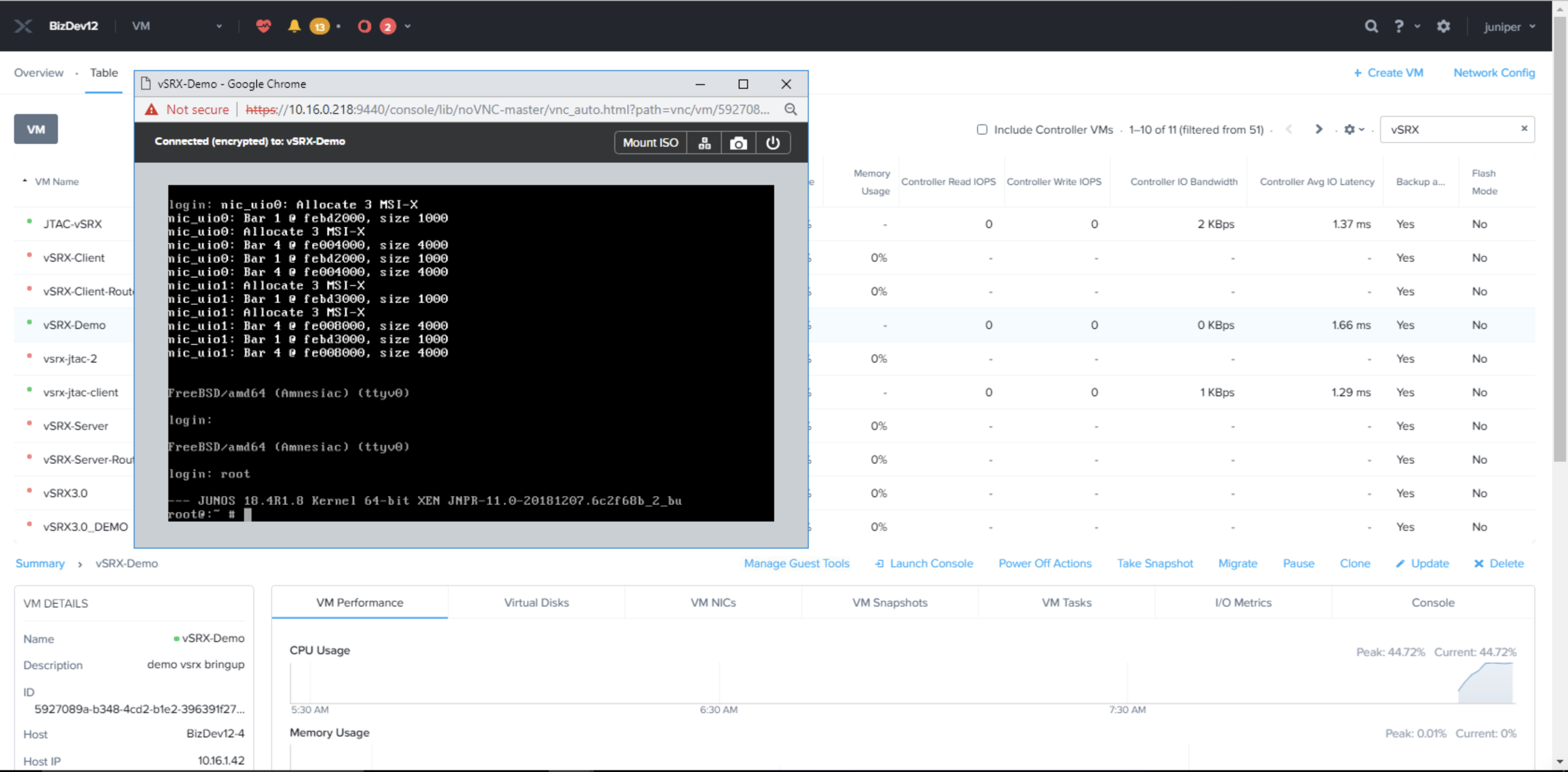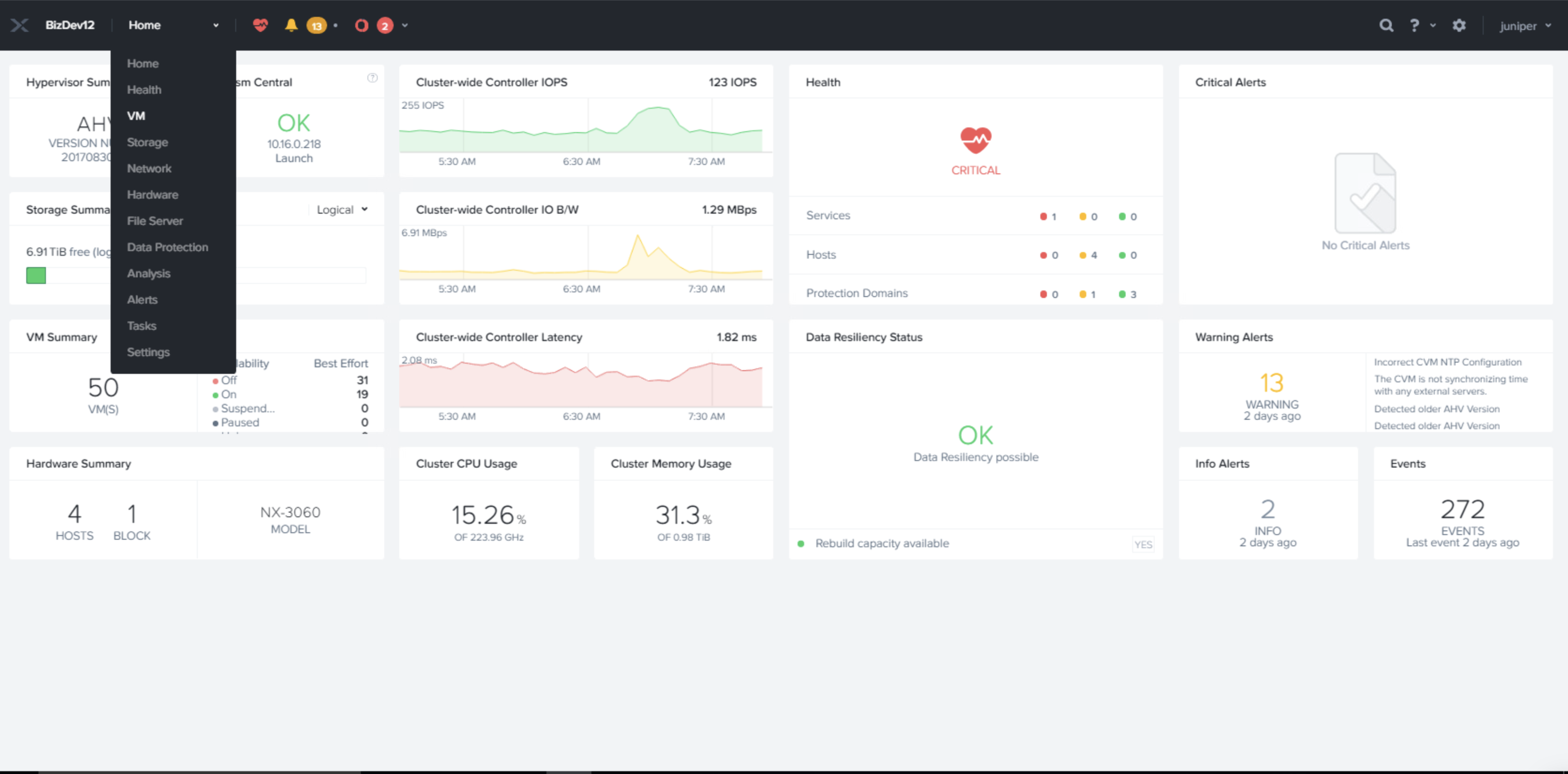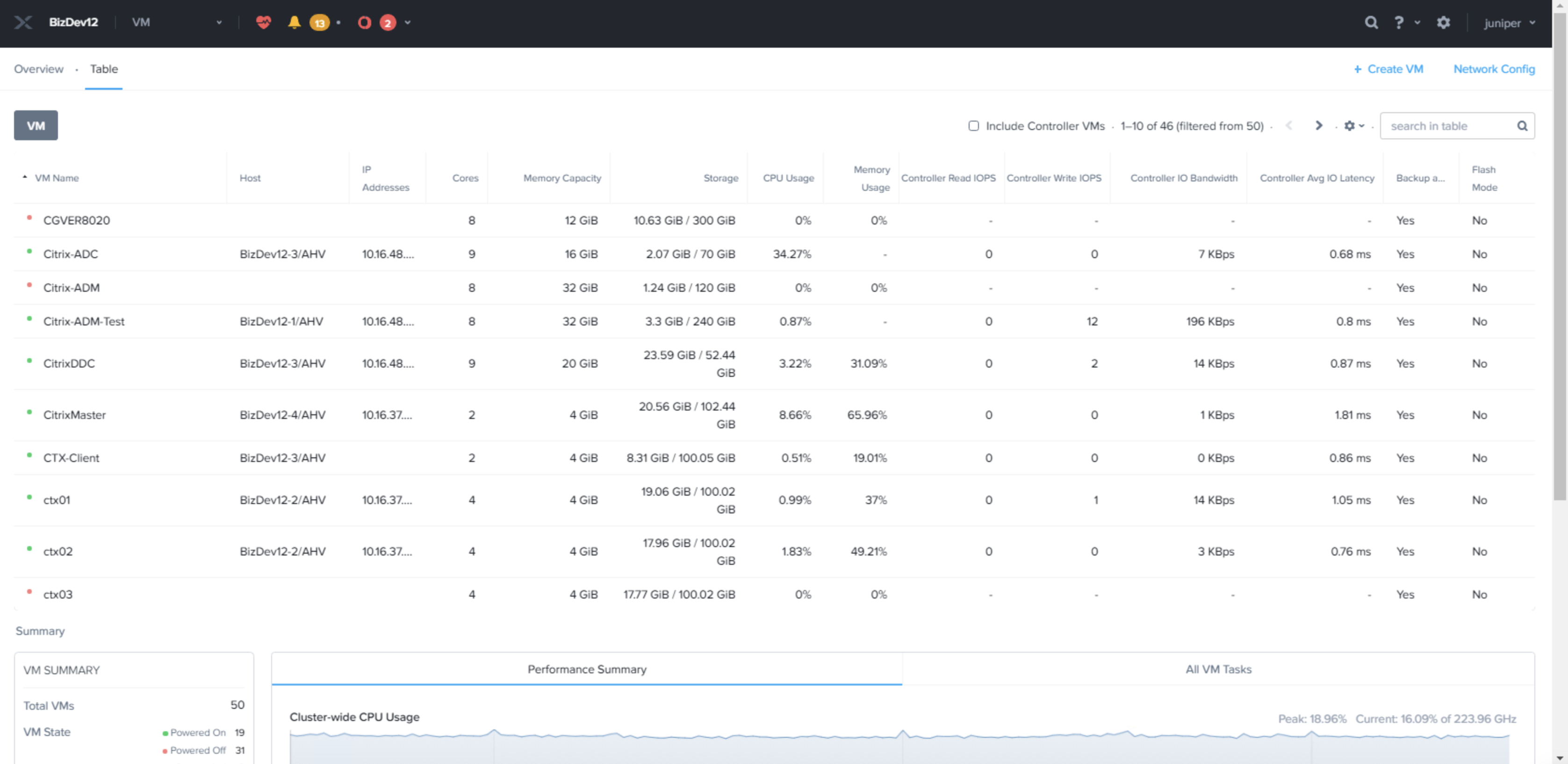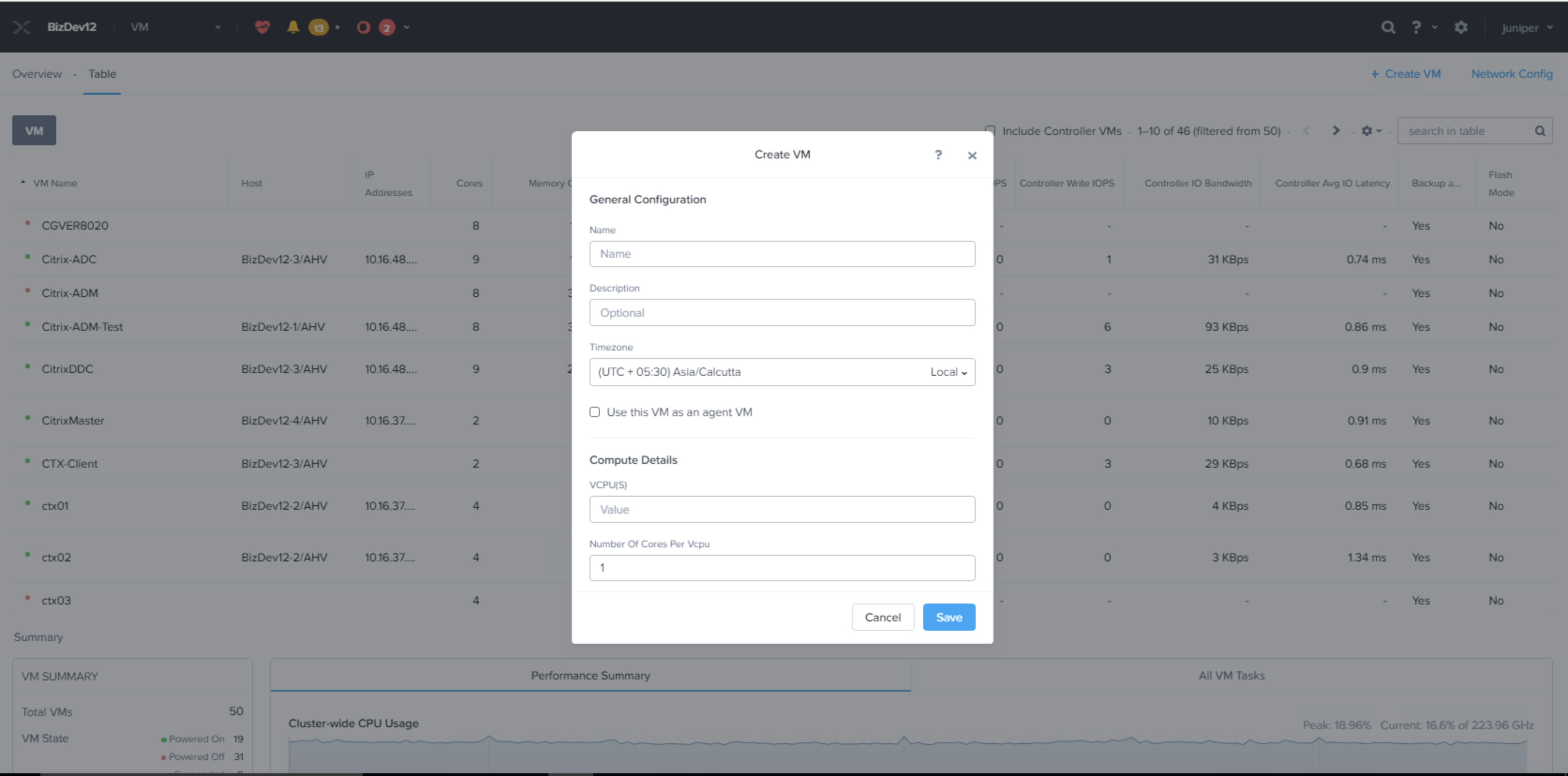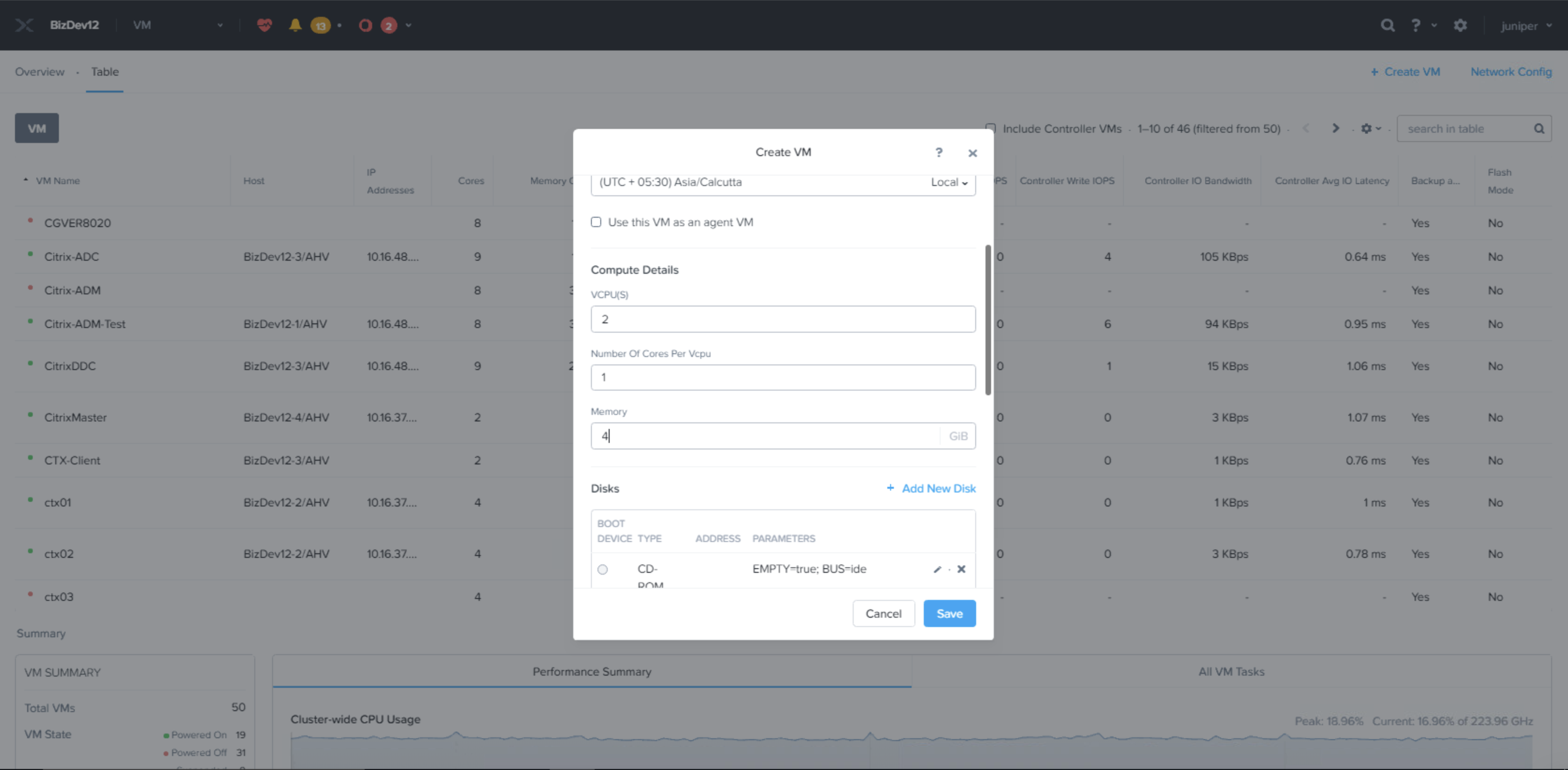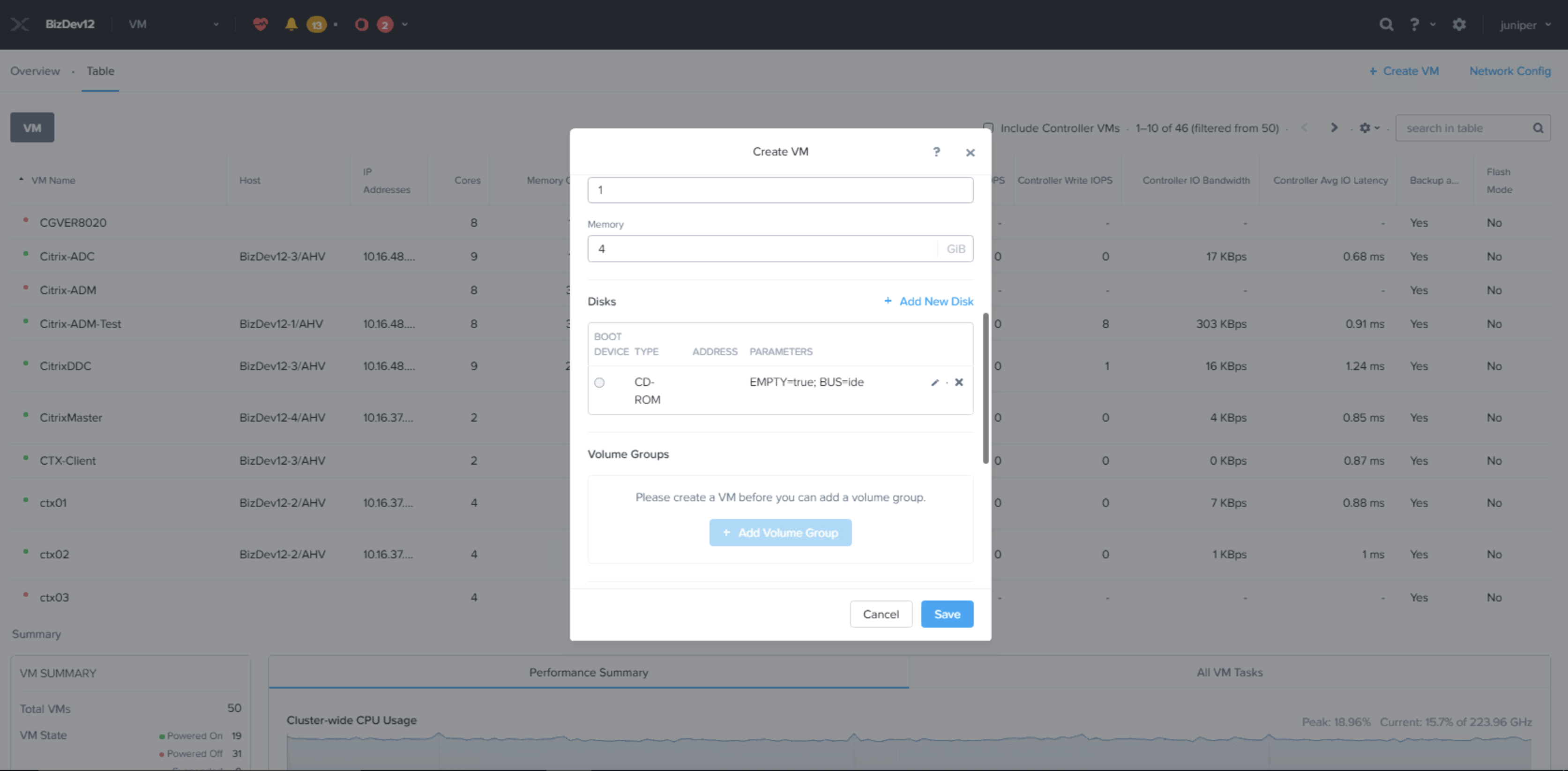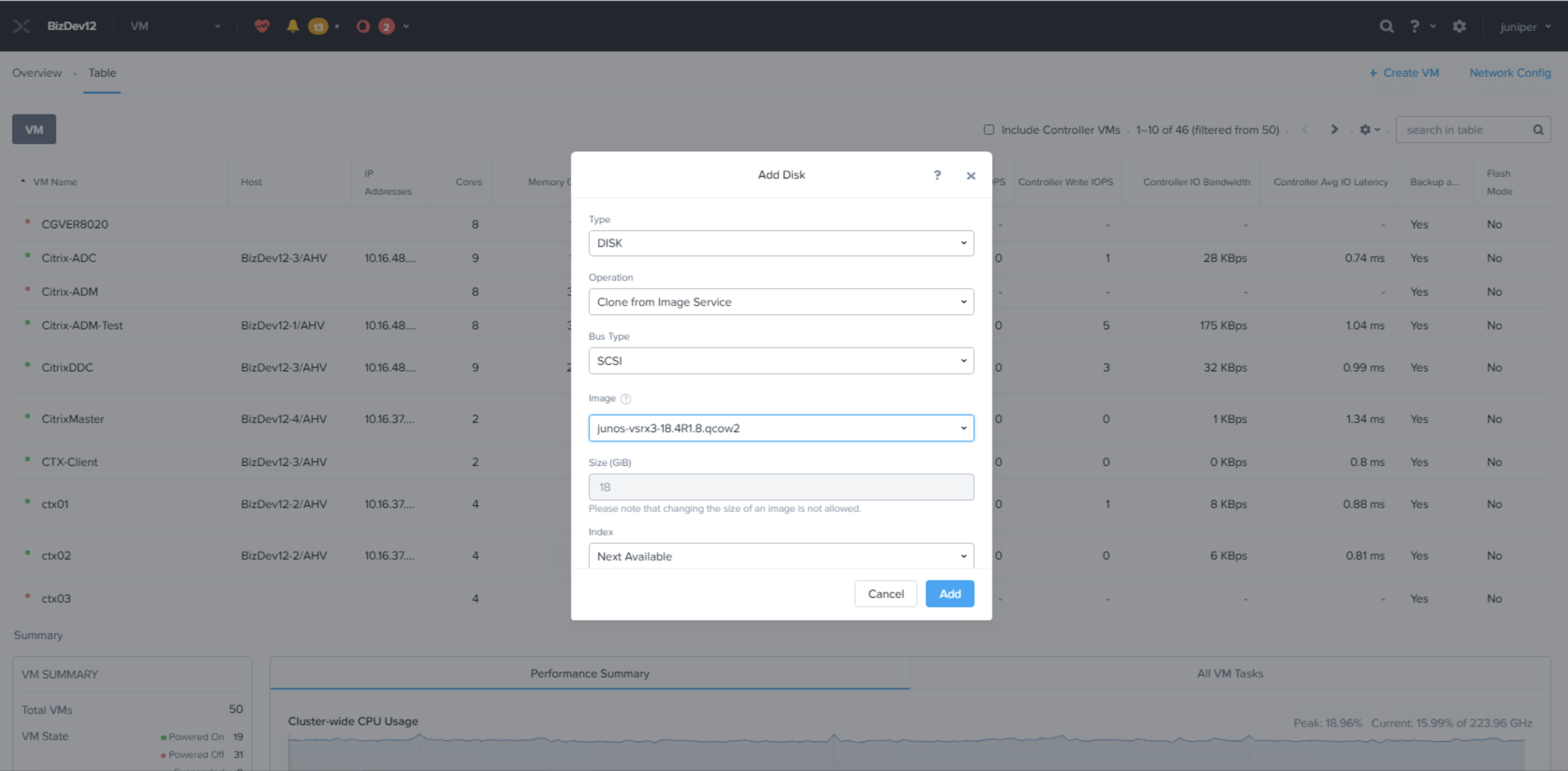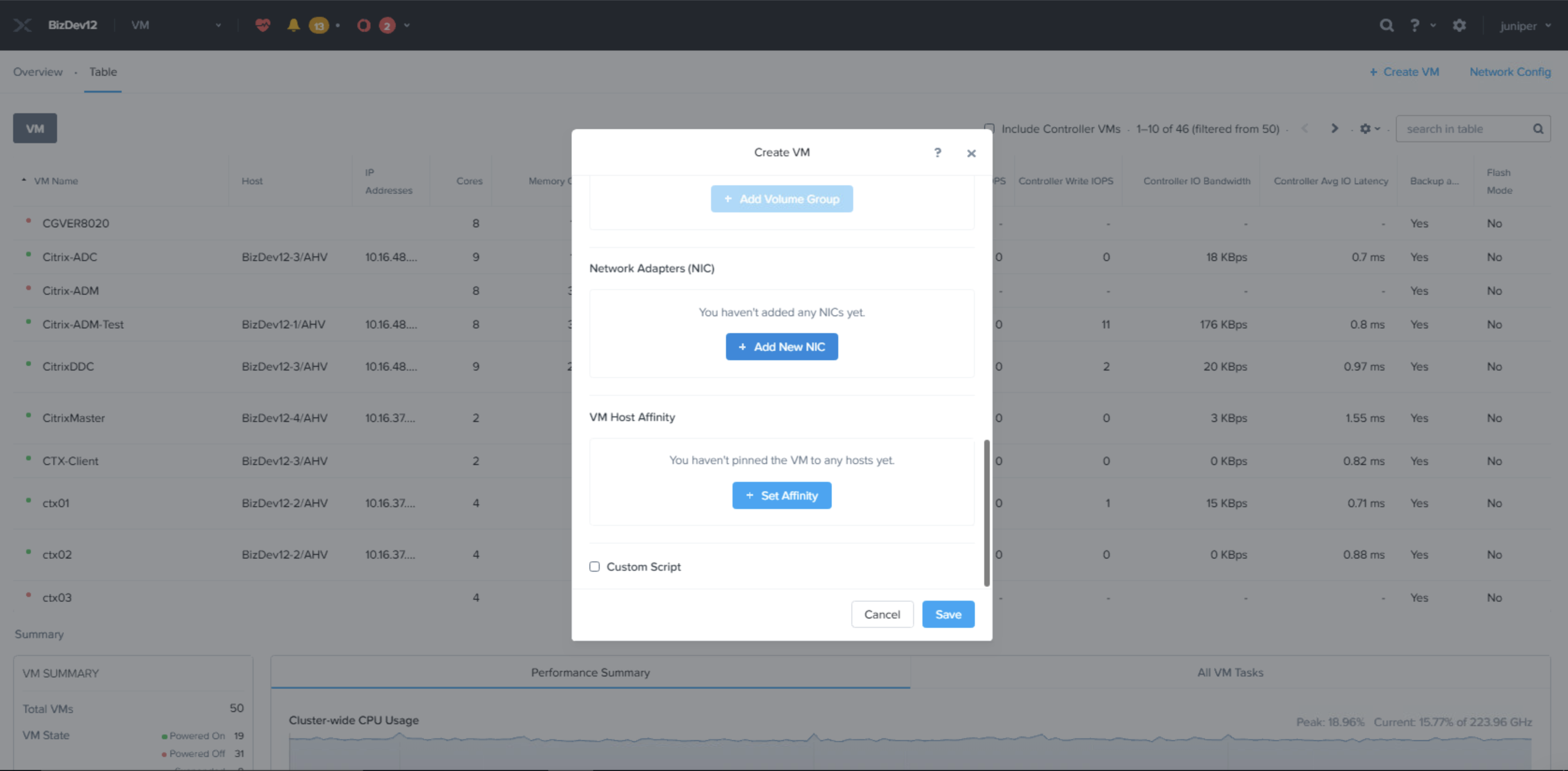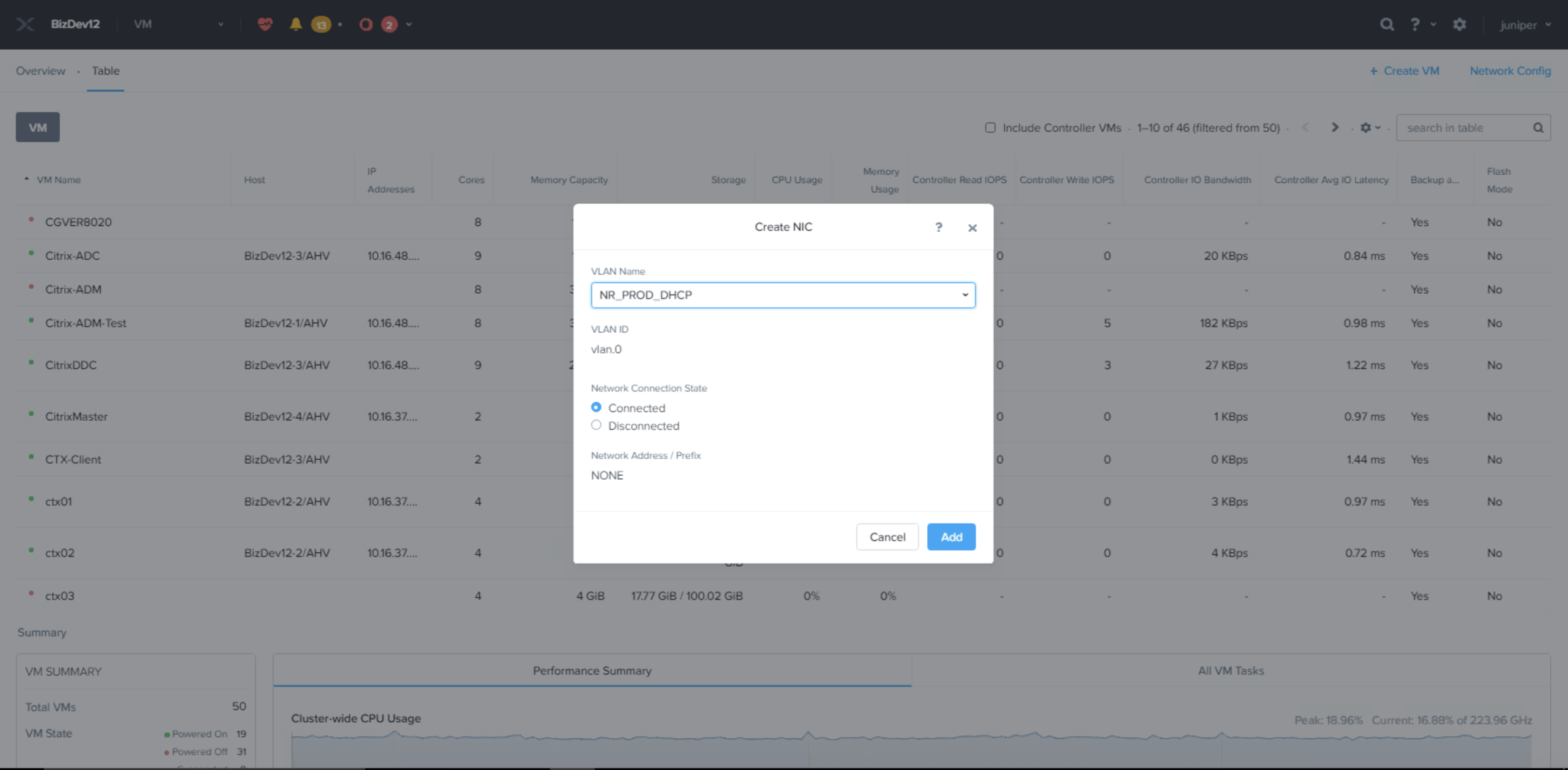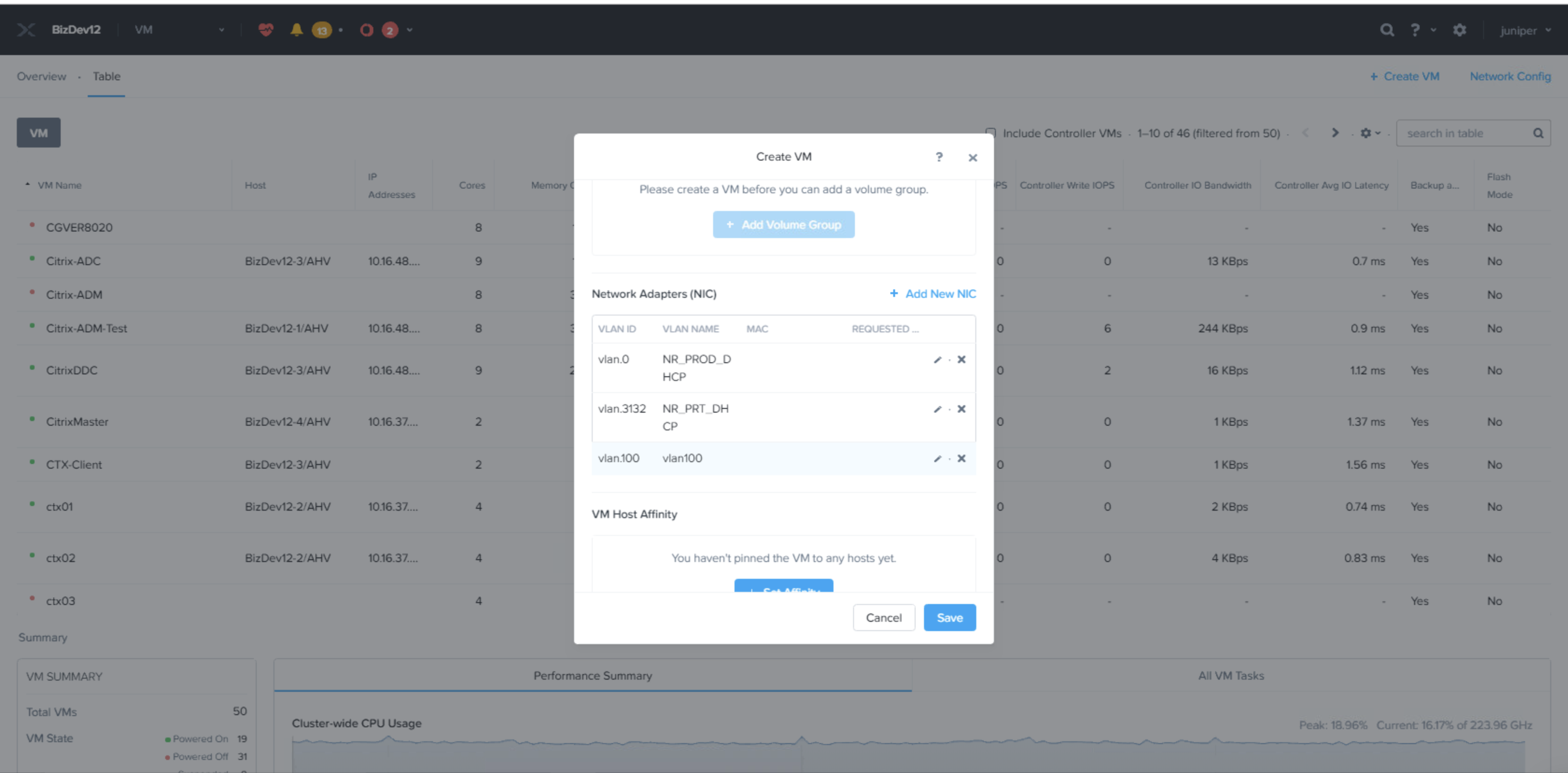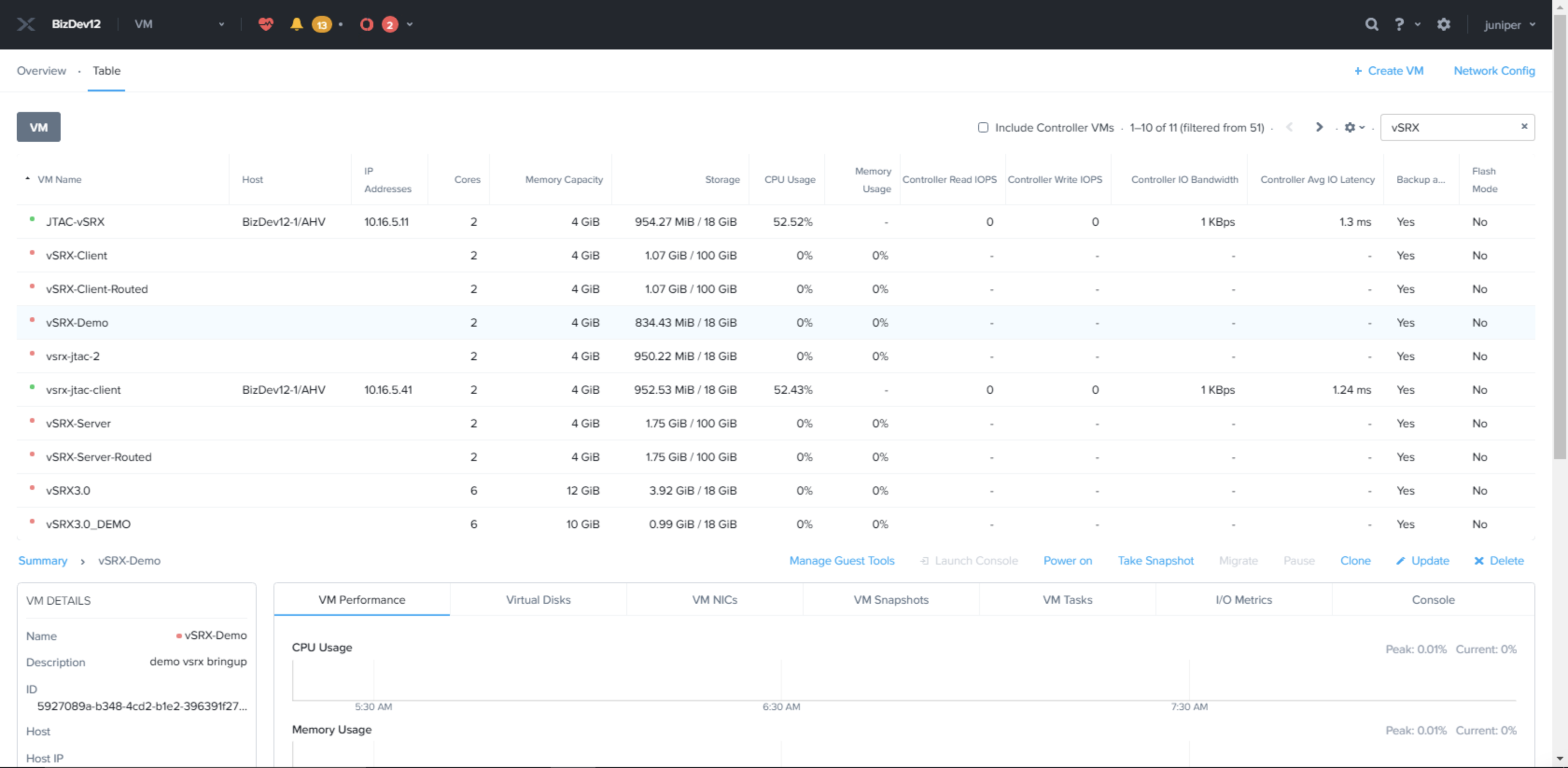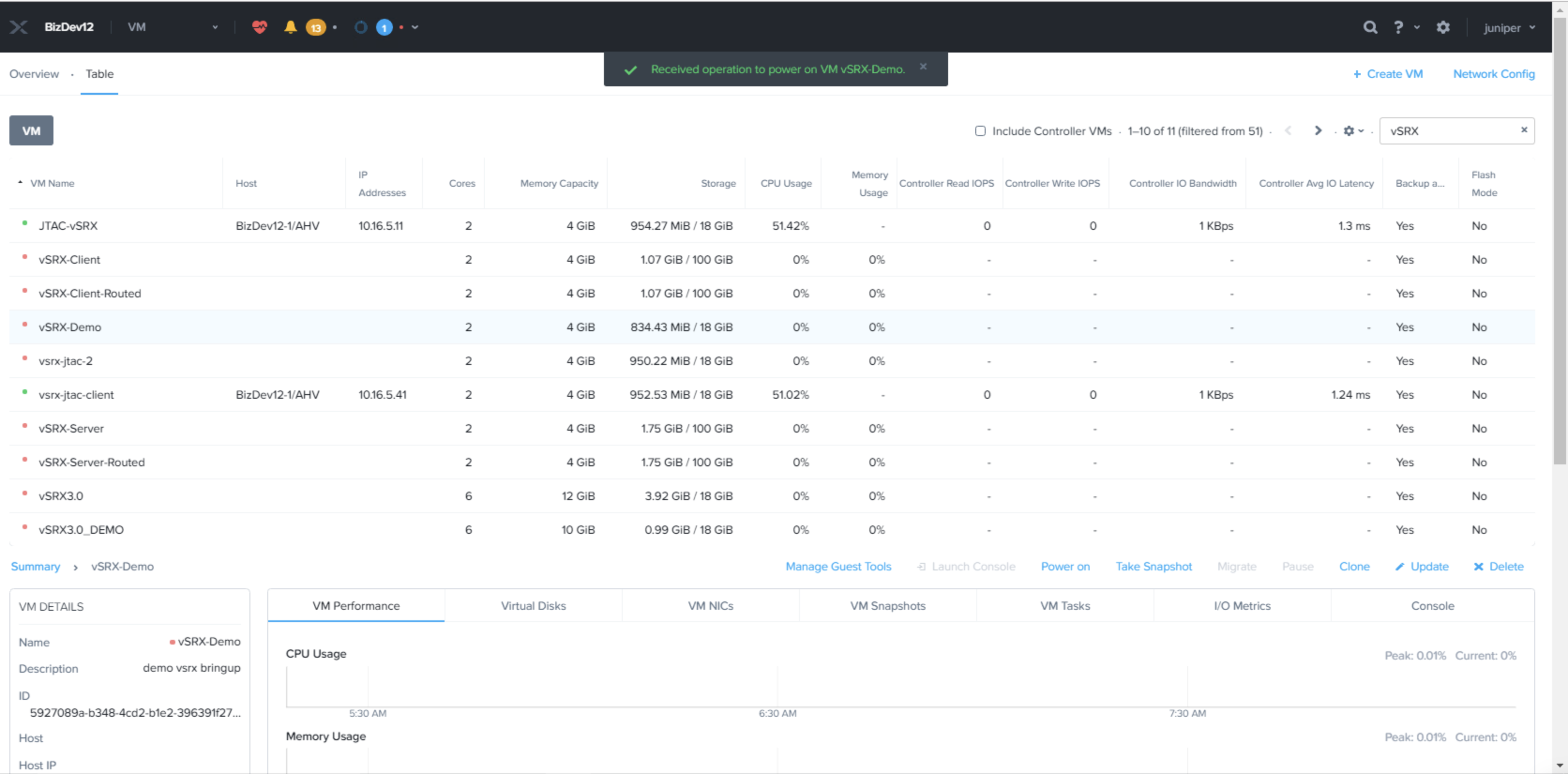Launch and Deploy vSRX Virtual Firewall in Nutanix AHV Cluster
Before you begin, you need a Nutanix account and an Identity and Access Management (IAM) role, with all required permissions to access, create, modify, and delete Nutanix cloud objects. You should also create access keys and corresponding secret access keys, X.509 certificates, and account identifiers. For better understanding of Nutanix terminologies and their use in vSRX Virtual Firewall deployments, see Understanding vSRX with Nutanix.
The topics in this section help you launch vSRX Virtual Firewall instances in a Nutanix AHV cluster.
Log In to Nutanix Setup
This topic provide details on how to log in to Nutanix setup.
To access the Nutanix management console, remote access must be enabled on your local machine.
Once you have logged in to the remote Windows machine, you can access the Nutanix Prims Enable using your Web browser.
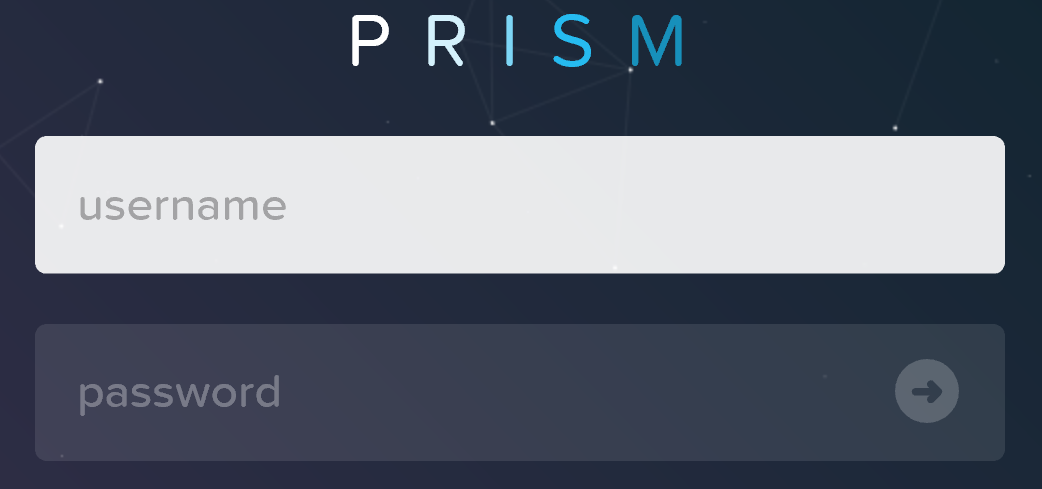
After you provide login details, the Nutanix Prism home page appears.
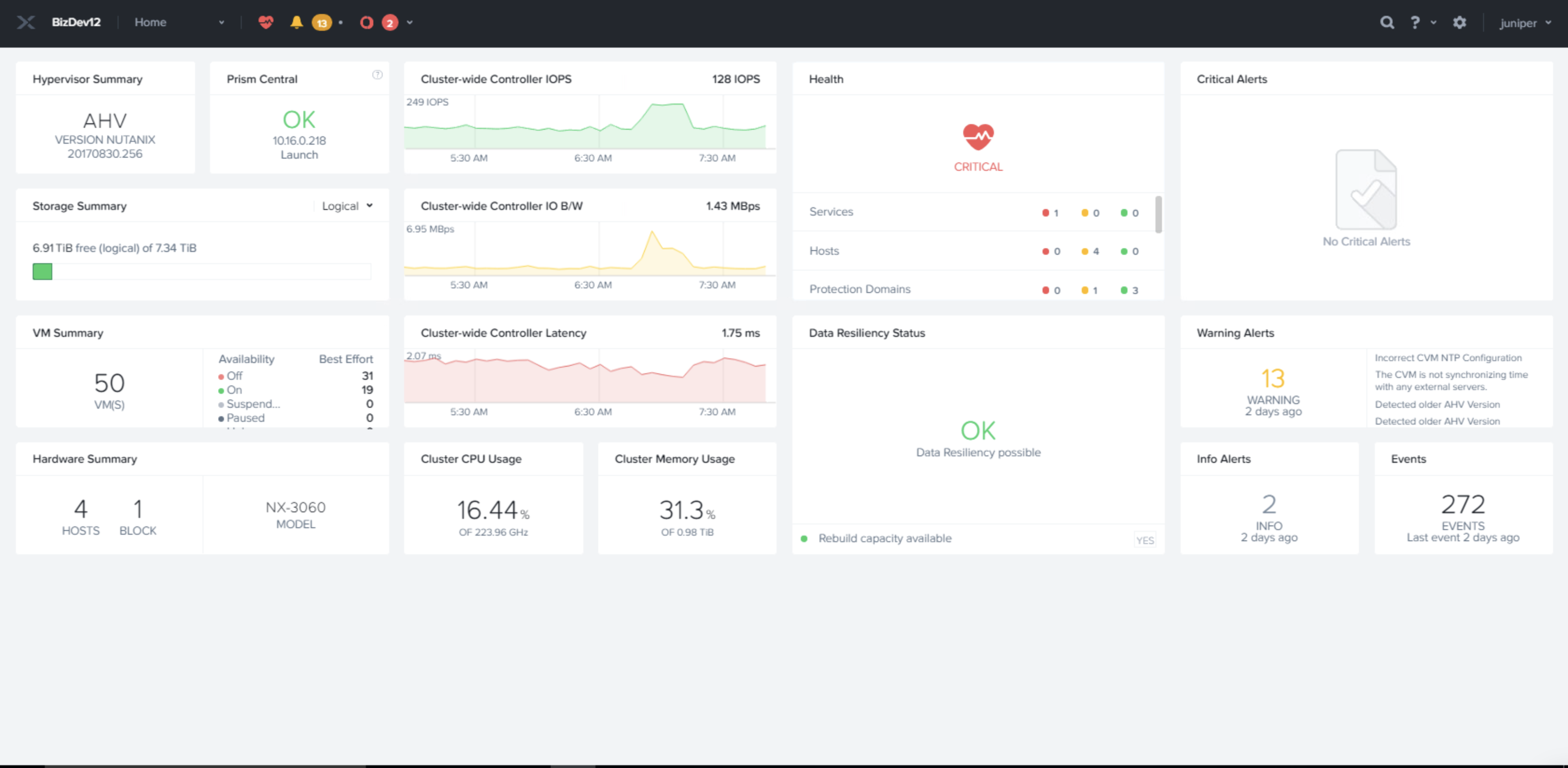
Adding a vSRX Virtual Firewall Image
Before you create a vSRX Virtual Firewall image, copy the image in the local machine from which the image can be accessed by Nutanix Prism Element. After copying, locally source the images from Prism GUI.
All the required vSRX Virtual Firewall images are available in the Juniper download page. After you copy the vSRX Virtual Firewall image on the local machine, complete the following steps to upload the image in Nutanix:
- Click the Image configuration option from the Tool menu in the on top-right corner of the Prism home page.
- Click the Upload Image tab.
- Enter the required image details and provide a local file path under Image source. Wait for the image to be uploaded successfully.
Network Creation
This topic provides details on configuring the network for deploying vSRX Virtual Firewall VMs.
You can create a Routing Engine-FPC (RE-FPC) (or any other network) using the following steps:
In this deployment guide, all the the networks created on Nutanix setup are VLAN-based networks. Therefore, if you are deploying a Routing Engine and FPC on different hosts (compute nodes), the VLAN that is used by the RE-FPC internal networks must be part of the allowable VLAN range that is configured on the top-of-rack switch connecting the two machines.
We tested the use case in which the Routing Engine and FPC were deployed on different hosts. However, for all our other tests, we deployed the Routing Engine and FPC on the same host.
Create and Deploy a vSRX Virtual Firewall VM
This topic provides details on how to deploy a vSRX Virtual Firewall VM.
In Acropolis-managed clusters, you can create a new virtual machine (VM) through the Web console. When creating a VM, you can configure all of its components, such as number of vCPUs and memory, but you cannot attach a volume group to the VM. Attaching a volume group is possible only when you are modifying a VM.
Power on the vSRX Virtual Firewall VMs
This topic provides you details on how to power on vSRX Virtual Firewall VMs.
Launch vSRX Virtual Firewall VM Console
This topic explains how to launch the vSRX Virtual Firewall VM console.
Click the Launch Console option at the bottom of screenshot as shown in Figure 15 to launch the VM console.
